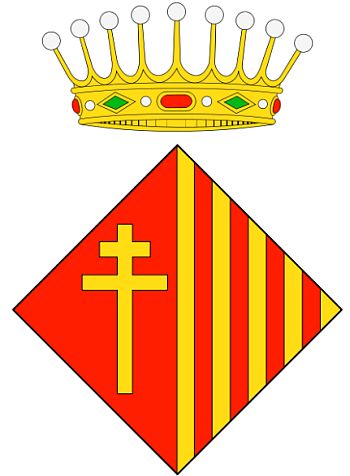Besalú: Difference between revisions
Jump to navigation
Jump to search
Knorrepoes (talk | contribs) m (Text replacement - "{{es}}↵↵'''" to "'''") |
Knorrepoes (talk | contribs) m (Text replacement - "↵↵'''" to "'''") |
||
| Line 21: | Line 21: | ||
The patriarchal cross is a traditional sign of Besalú, that was the centre of | The patriarchal cross is a traditional sign of Besalú, that was the centre of | ||
one of the former counties of Catalonia (because of that there is a count crown at the | one of the former counties of Catalonia (because of that there is a count crown at the | ||
top). The four gules pales on gold are the royal sign of Catalonia-Aragon. | top). The four gules pales on gold are the royal sign of Catalonia-Aragon. '''[[Literature]]''': | ||
'''[[Literature]]''': | |||
{{media}} Image taken from Wikipedia; background from Enric Fontvila, Barcelona. | {{media}} Image taken from Wikipedia; background from Enric Fontvila, Barcelona. | ||
Revision as of 13:59, 29 January 2024
BESALÚ
Region : Catalonia
Province : Girona
| Catalan | Escut caironat partit: 1r. de gules, una creu patriarcal d'or; 2n. d'or, 4 pals de gules. Per timbre una corona de comte. |
| English | blazon wanted |
Origin/meaning
The arms were granted on June 7, 1989.
The patriarchal cross is a traditional sign of Besalú, that was the centre of one of the former counties of Catalonia (because of that there is a count crown at the top). The four gules pales on gold are the royal sign of Catalonia-Aragon. Literature:
Contact and Support
Partners:
Your logo here ?
Contact us
© since 1995, Heraldry of the World, Ralf Hartemink 
Index of the site Image taken from Wikipedia; background from Enric Fontvila, Barcelona.










